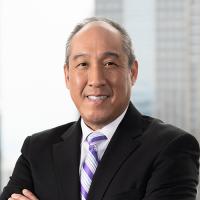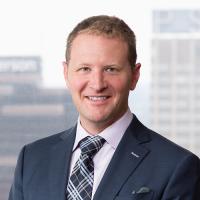On November 4, 2022, the Supreme Court granted certiorari in Amgen v. Sanofi, No. 21-757, agreeing to review, “whether enablement is governed by the statutory requirement that the specification teach those skilled in the art to ‘make and use’ the claimed invention, 35 U.S.C. § 112, or whether it must instead enable those skilled in the art ‘to reach the full scope of claimed embodiments’ without undue experimentation[.]” Cert Petition at i.
What You Need to Know:
- The Supreme Court granted certiorari in Amgen v. Sanofi, No. 21-757, agreeing to review the Federal Circuit’s “full scope of the claimed embodiments” test for enablement.
- The claims at issue are functional claims that cover monoclonal antibodies that “bind[]” in certain ways to a naturally occurring protein and that further “block[] binding” of that protein to receptors in the liver. This presents the Court an opportunity to address the enablement of functional claims.
- This decision could potentially impact a wide range of existing patents, in technical fields ranging from the life sciences to technology, and could also affect claim drafting practice going forward.
Patent owner Amgen owns several patents directed toward treating high cholesterol. Cert Petition at 7. The body removes low density lipoprotein (“LDL”), colloquially known as “bad cholesterol” from the bloodstream using LDL receptors on the liver. But, the naturally occurring protein PCSK9 can bind to these LDL receptors, causing them to be destroyed. Id. To address this, Amgen invented monoclonal antibodies that bind to PCSK9. These antibodies bind a specific region of PCSK9; by binding that region, they block PCSK9 from binding LDL receptors and prevent them from being destroyed. The representative claims at issue recite functional limitations:
- An isolated monoclonal antibody, wherein, when bound to PCSK9, the monoclonal antibody binds to at least one of the following residues [followed by a list of 15 amino acid residues], and wherein the monoclonal antibody blocks binding of PCSK9 to [LDL receptors].
Sanofi Br. at 4-5 (alterations in original).
In 2014, Amgen sued Sanofi (and other defendants) in the District of Delaware, alleging that Sanofi’s competing PCSK9 antibody product infringed Amgen’s patents. The case had a long procedural history, including two jury trials and two trips to the Federal Circuit. At issue here was the second jury trial. There, the jury found that Amgen’s claims were not invalid under § 112 for lack of enablement and written description. But, in a post-trial decision, Judge Richard Andrews granted Sanofi’s JMOL motions on § 112 grounds, finding the patents invalid for a lack of enablement. The Federal Circuit affirmed the enablement JMOL. Amgen Inc. v. Sanofi, Aventisub LLC, 987 F.3d 1080 (Fed. Cir. 2021).
After the Federal Circuit denied Amgen’s petition for en banc review, they petitioned for certiorari on two questions:
- Whether enablement is “a question of fact to be determined by the jury,” Wood v. Underhill, 46 U.S. (5 How.) 1, 4 (1846), or “a question of law that [the court] review[s] without deference,” Pet.App. 6a, as the Federal Circuit had held.; and
- Whether enablement is governed by the statutory requirement that the specification teach those skilled in the art to “make and use” the claimed invention, 35 U.S.C. § 112, or whether it must instead enable those skilled in the art “to reach the full scope of claimed embodiments” without undue experimentation—i.e., to cumulatively identify and make all or nearly all embodiments of the invention without substantial “‘time and effort[.]’”
Cert Petition at i. The Supreme Court granted certiorari as to the second question only.
Questions abound with this case, which is teed up to be heard this coming Spring Term. But, three main issues are worth considering: The Supreme Court’s prior precedents on enablement, and how well they apply to the facts at hand; the unique challenges that functional claims pose; and how the Federal Circuit’s tests will be received.
Prior Precedents
This case offers the Supreme Court a chance to revisit enablement. Some 130 years ago, the Court confronted this issue in the celebrated case of Consolidated Electric Light Co. v. McKeesport Light Co., 159 U.S. 465 (1895) (“The Incandescent Lamp Patent”)—a case relied upon by Respondent Sanofi. Sanofi Br. at 31. There, the patentee sued Thomas Edison on a patent covering electric light bulbs having a carbon filament. The first independent claim recited, “An incandescing conductor for an electric lamp, of carbonized fibrous or textile material, and of an arch or horseshoe shape, substantially as hereinbefore set forth.” Id. at 468. Edison prevailed at the trial level on several grounds, one of which was a lack of enablement. See id. at 469, 477.
The Supreme Court affirmed the trial court (then called “circuit court”), agreeing with Edison that the asserted patent failed to “enable any person, skilled in the art or science to which it appertains or with which it is most nearly connected, to make, construct, compound, and use” “all fibrous and textile materials.” Id. at 472, 474. What most persuaded the Court was that Edison had undertaken lengthy experiments to find a suitable carbonized fibrous or textile material that worked as a lightbulb filament. Indeed, Edison first tried 30-40 different woods, which did not work; he nearly gave up, but discovered that bamboo worked because its parallel fibers produced homogenous carbon filaments. Id. at 473-74. Not satisfied to stop at merely bamboo, Edison then tested about 40 different kinds of bamboo to find a suitable variety. Id. In light of Edison’s extensive experimentation, the Court concluded that the patentee was not entitled to its broad claim over the genus of “all fibrous and textile materials.” It reasoned that the patentee had failed to discover “some general quality, running through the whole fibrous and textile kingdom, which distinguished it from every other, and gave it a peculiar fitness for the particular purpose” that is, as a filament. Id. at 475. The Court also found it significant that the patentee itself had copied Edison’s bamboo fiber filaments. Id. at 476.
The Court revisited enablement some 30 years later in Minerals Separation, Ltd. v. Hyde, 242 U.S. 261 (1916)—a case relied upon by Amgen. Then, the Court upheld the validity of a patent involving “improvements in the process for the concentration” of metallic ores. 242 U.S. at 263. The invention involved adding oil to the ore and agitating the mixture. Id. at 265. The Court recognized that there were “infinite[]” varieties of ore, and skilled artisans would have to conduct “preliminary tests” to identify the “precise treatment” for each, say, by varying “the amount of oil and the extent of agitation necessary in order to obtain the best results.” Despite these variable parameters, the patent could still “leav[e] something to the skill of persons applying the invention” and still sufficiently guide those skilled persons to the “successful application” of the invention. Id. at 271.
Functional Claim Limitations
Amgen’s patents claims—that recite antibodies that “bind to” certain amino acids and “block binding” of PCSK9—offer the Court an opportunity to focus on functional claim limitations. One question may be whether the Court needs to offer any further guidance enabling a functionally defined genus, or whether the patentee need only describe “some general quality, running through the whole” of that same genus (and further, whether Amgen did so).
The Federal Circuit’s Tests
As amicus Glaxo-SmithKline pointed out in its brief in favor of certiorari, the Court has not been receptive to the Federal Circuit’s “rigid, atextual test[s].” GKS’s amicus Br. at 14 (citing KSR Int’l Co. v. Teleflex Inc., 550 U.S. 398, 421 (2007) (“Rigid preventative rules that deny factfinders recourse to common sense, however, are neither necessary under our case law nor consistent with it.”); see also Octane Fitness, LLC v. ICON Health & Fitness, Inc., 572 U.S. 545, 553 (2014) (rejecting Federal Circuit’s framework for attorney fees as “unduly rigid”); Halo Elecs., Inc. v. Pulse Elecs., Inc., 579 U.S. 93, 104 (2016) (rejecting Federal Circuit’s test for enhanced damages as “unduly rigid”). Going one step farther, GSK has likened the “full scope” test as one of those.
Sanofi disputed the characterization of the enablement test as rigid, and argued “the [Federal Circuit] panel repeatedly disclaimed any bright-line rules or tests; its holding was simply the result of applying factors that the Federal Circuit has long used when evaluating enablement to the undisputed relevant evidence in this case, and that approach is consistent with the statutory text and this Court’s precedents.” Sanofi Br. at 2; see also In re Wands, 858 F.2d 731 (Fed. Cir. 1988).
Conclusion
Directly before the Court in Amgen v. Sanofi lies the Federal Circuit’s “full scope of the claimed embodiments” test for enablement. The Court’s decision could impact a wide swath of existing patents with functional claims, and could also dictate patent prosecution practice going forward. The decision on enablement could also impact fields such as life sciences (as in the present case), but also in technology. See, e.g., McRO, Inc. v. Bandai Namco Games Am. Inc., 959 F.3d 1091, 1100 (Fed. Cir. 2020) (cited in Amgen v. Sanofi, 987 F.3d at 1085-87).

